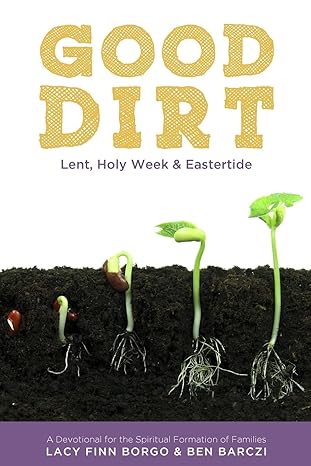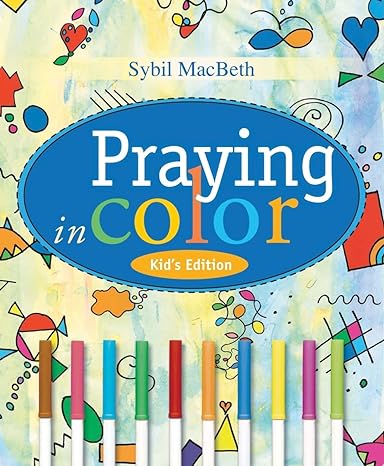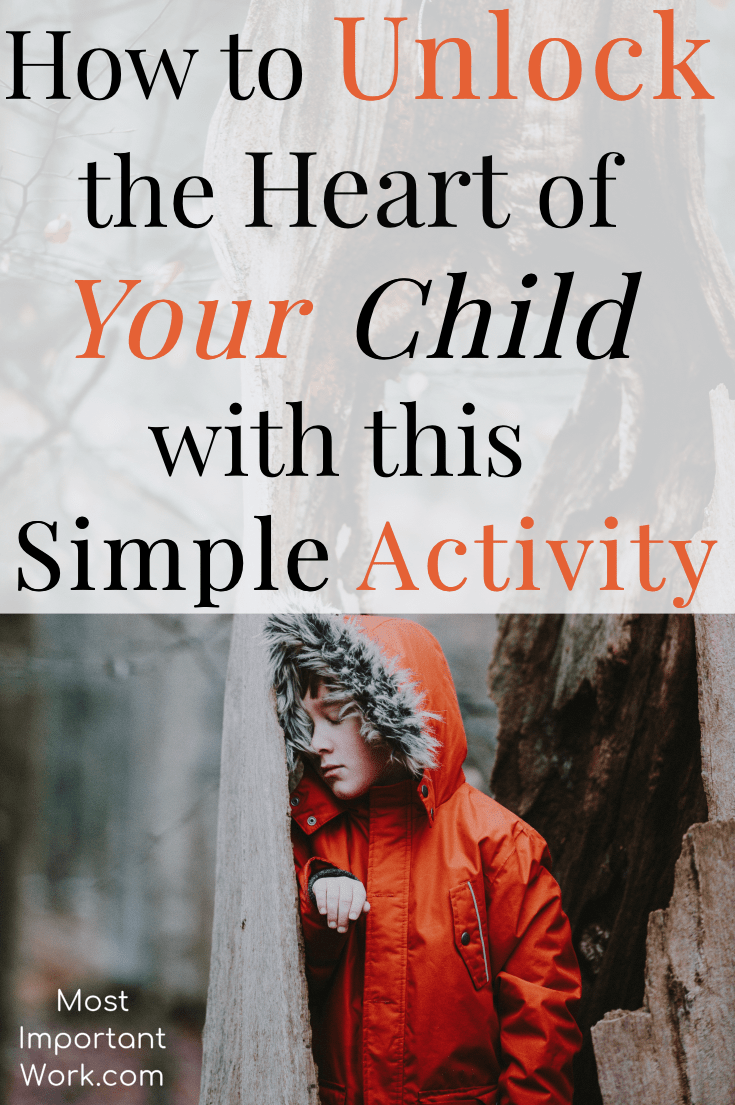
Reading Time: 5 min 31 sec
Have you ever had a year where you are so busy that one minute its Christmas and the next, it’s the Saturday before Easter and you are scrambling trying to cobble together outfits and stuff a million Easter eggs with chocolate bunnies?
Do you wish that there was a way to really help your children understand that Easter is more than eggs, candy, with some Jesus thrown in? ME TOO!
In our fast-paced society, it can be easy to pass over the importance of the lent season with nothing more than a thought or a good intention to stop eating chocolate.
But Lent is more than giving something up; it is a time of reflection, of preparing our hearts, of remembering Christ’s life, death and resurrection, and a concentrated time of refocusing on Jesus. A forty day (not including Sundays) fast, interwoven with prayer and giving that culminates on Easter Sunday.
We do not celebrate Lent or Easter as a way to earn more brownie points with God or as another task to complete. There is nothing we can do to make God love us any more or any less than he does right now. We participate in Lent and Easter as a way to actively participate with the Holy Spirit in the transforming of our hearts.
I love how life as a follower of Jesus, is an ACTIVE, experiential life. We don’t just get to hear about God, we get to EXPERIENCE a relationship WITH God. Children learn experientially, and active participation is formational in their spiritual growth. Lent and Easter is a time rich with experiences and a perfect way for children to actively engage in their faith.
We are going to be talking about 13 meaningful experiences that you can have with your child as you learn to walk through this Easter season with intention.
These are just suggestions. You do not need to do everything on the list but choose one or two activities that are speaking to you. I pray that the Holy Spirit moves in the hearts of your family in powerful ways this Easter season.
-
Art
-
Devotional
-
Drama
-
Events
-
Decorations
-
Music
-
Practices
A Couple of Tips: Your active participation with your child in the activity is HUGE. Do not to rush through these activities. It is not about getting them “done” and giving your child an Easter experience. This is not about being productive but about moving slowly, savoring, and giving the Holy Spirit elbow room to speak with your child. Allow for silence, (yes, this can work even with preschool children) in and around the activity.
1.Use a Lent-Easter Family Devotional

 This is the BEST devotional, (Good Dirt Lent, Holy Week, Eastertide Devotional) I have found yet for kids during Easter. The devotional is very doable for each day(it’s about a half a page).
This is the BEST devotional, (Good Dirt Lent, Holy Week, Eastertide Devotional) I have found yet for kids during Easter. The devotional is very doable for each day(it’s about a half a page).
The devotional covers Lent, Holy Week and Eastertide and is written from an evangelical perspective. I really appreciate how each devotional is broken into four sections: Till (Prayer) Plant (Meditate on Scripture) Water (Reflect) Weed (Examine). The book includes 14 weeks of devotionals. You can grab your copy here!
2. Decorate Your Home
Allow the decorations in your home to serve as a daily reminder of the importance of the Lenten season. The color purple serves as the traditional reminder of Easter. It symbolizes not only the pain of the cross but it is also the color of royalty, and it celebrates Jesus’s resurrection. Decorate a table or space (or throughout the house) with the color purple, you could add a cross, a Bible and or a candle.
3. Observe Ash Wednesday
Ash Wednesday serves as the start to the lenten season. It is important for your child to witness the community of God gathered together to worship him. Carving out time to attend serves speaks louder than words to your child about your family’s priorities.
4. Light a Candle
Every morning, start your day, by lighting a candle each day to as a reminder of Jesus’ shining light in the world. You can follow the lighting of the candle with prayer inviting him into your day.
5. Look at Art
Visit a church, or museum, in books, or print some pictures off the internet depicting the crucifixion and resurrection.
Start by inviting Jesus into this time. Find a piece that speaks to you or your child. Spend some time just enjoying the art.
Ask God what he is saying to you through this piece. Remember, this is for you as much as it is for your child. It is powerful for your children to watch you engage with the Holy Spirit through art.
After a couple of minutes ask your child:
a) How does this piece make you feel?
b.) What do you love about it?
c) What do you think the Father is saying to you through this piece?
Tip: Don’t rush. The goal is quality over quality. You are there to create elbow room for the Holy Spirit to speak to them through art. You are not there to teach your kids something (though they will learn). Also, don’t feel like you have to be there an hour to make it worthwhile.
6. Listen to an Easter Playlist
It is important to place a special emphasis on creating an environment that draws their hearts towards Jesus during this Lenten season.
Tip-I am loving the Lent and Easter Worship Songs Playlists by Salt of the Sound on Spotify
7. Act out the Easter Story
This can be as simple or elaborate as you desire. 🙂 This is great for allowing the children to really engage in the story of Easter. Remember this is not about getting it “right” but about engaging in the story of Jesus’ resurrection.
Tip: Your children can also do this with stuffed animals or dolls.
8. Draw Prayers to Jesus
Layout art supplies, plain paper, and have your Easter playlist playing quietly in the background. Encourage your child to write or draw prayers to Jesus.
Tip: This should not feel like a homework assignment. There is no correct way of doing this. This is their personal prayer to God. Let them know that they can but don’t have to share their prayers with you when they are done.
9. Watch a Video of the Easter Story
Here are two suggestions for younger and older children:
- Preschool-Elementary- The Animated Passion Trilogy
- Middle School-High School- Matthew:Visual Bible
10. Use Playdough to Recreate the Empty Tomb
This is a GREAT, hands-on, simple activity to allow children to engage in the Easter story.
11. Draw or Paint an Easter Scene
Read through the story of Jesus’s death and resurrection. Encourage your children to draw or paint a picture of a scene from the Easter story that grabs their attention.
Tip: I typically put on instrumental music in the background to help focus their attention on listening to Jesus.
12. Look for Ways to Serve Others
Pray with your children. And ask God what way he wants you to focus on serving others during this Lenten season.
13. Attend a Good Friday and Easter Service
If appropriate allow your children to join you for all or part of the service. The death and resurrection of Jesus are foundational to our faith and allowing your child to witness that at a young age is HUGE! Also, Easter sunrise services are amazing (especially for elementary age children).
14. Plan a Special Meal for Easter Sunday
The goal is to plan and prepare WITH your children a special meal celebrating Jesus’ resurrection. Invite over family and friends to celebrate.
Give your Easter season a strong foundation by grabbing your own copy of the Good Dirt: Lent, Holy Week & Eastertide Devotional. I am excited to travel through it with my own family this year! You can get it here!
What about you? What are your favorite ways to encourage a love of Jesus in your child during Easter?
If you try any of these activities, let me know! Leave me a comment and don’t forget to follow Most Important Work on Pinterest!
[/et_pb_text][/et_pb_column][/et_pb_row][/et_pb_section]

Reading Time: 4 min 48 sec
I have served in a variety of children’s and youth ministry roles over the years and every fall, I would look forward to that new group of incoming students. Every year, you would have 1 or two students who would just knock your socks off. Not with their magnetic personality (though some of them did) but with their desire to know Jesus.
They were young men and women who were unabashed by their hunger for Jesus, they served others with a humble heart, spoke life over the people around them, and were never content with their current experience of Jesus.
They were in a word… Inspiring.
The crazy thing is that those same students are now grown, starting their own families, and are still pursuing a life WITH Jesus.
What made them so different from their peers?
I believe there are four practical steps YOU can take to influence the spiritual life of your child.
-
Experience God
2. Focus on Heart Transformation
3. Trust in the Holy Spirit
4. You can’t Lead where You Haven’t
Been
1. Experience God
Children learn primarily from their experiences. Think about it, how did your children get to know you? Did they ask other people questions, did they study your family tree, did they spend time talking to others about you? OR did they experience you from before they were born; the sound of your voice in the womb, the touch of your skin as they entered the world, the snuggles, the safety of your presence, the hugs? They know you by EXPERIENCE, not by words.
A life of faith is not school but a real, breathing, organic relationship with Jesus. Your child needs to experience it, not just hear about it. I am not downplaying the crucial role of the Bible in our lives but we need to marry experience and knowledge together to grow as a thoroughgoing follower of Christ. You can do this by intentionally including God into your everyday life.
Light a candle to remind you of God’s presence, use art to help you listen to God’s voice, take a walk in God’s creation, observe Sabbath, use play to help focus your child on Jesus words, etc. (See this post for more practical ideas). Experience is critical for children to establish a strong relationship with Jesus.
2. Focus on Heart Transformation
Who doesn’t want your child to behave a civilized member of society? It’s an obvious question, but as parents (myself included) we can quickly move to focus on behavior modification (You do this and you will get x, y, and z) and completely miss the opportunity of heart transformation.
The heart can be a tricky place as it is where our thoughts and feelings originate. As parents, we can manage behaviors but the heart is harder to control. So what can we do to encourage our children to make Godly decisions even when we aren’t around?
We cannot by-pass heart work. We need to look deeper than external behaviors and notice the movement of their hearts.
In the book Parenting is Heart Work, the author says it this way; “Motivating Heart change isn’t easy. You can force a child to change behavior, but you can’t force a change of heart. Its deeper work. Helping children change their hearts requires a lot of thought, planning, and prayer. More and more parents are relearning discipline so that they can have a lasting impact on their children.”
Prayer is a great and crucial first step in parenting for heart transformation. We can miss out on a beautiful opportunity if we fall into the trap of praying for our kids only when there is a crisis. Covering our children in consistent prayer not only teaches us to be sensitive to the movements of their heart, but also gives room for the Holy Spirit to bring about our own heart transformation.
Prayer is a two-way street, take some time to be silent before God, listening for his voice and being present to him. God is faithful to highlight the issues that you need to be focusing on.
If you are interested in going deeper you can grab the book, Parenting is Heart Work by Dr. Scott Turansky and Joanne Miller
3. Trust in the Holy Spirit
As parents, we have to have trust in the Holy Spirit. We can try to do everything right and still blow it. We have to remember that parenting works well only when we are utterly dependent upon God and our huge need for grace.
We need to realize (believe, not just say) that on our own we can do nothing, but only by the power of the Holy Spirit, can we make a difference in the spiritual lives of our children. As children are observing the lives of their parents, soaking in their family values, and experiencing Jesus in real ways, they are internalizing all of that information.
“As they are ready, children construct or form their understandings for themselves, with the gracious presence, encouragement, and guidance of God’s Spirit.” Catherine Stonehouse and Scottie May, Listening to Children on the Spiritual Journey.
It does not come down to what you say (though that’s still important) but how you model your life WITH God, and through the work of the Holy Spirit that determines how your child views and interacts with God.
We need to remember that we are working with the Holy Spirit, not the Holy Spirit working with us. We don’t have to have all the answers or be Super Mom. What we have to do is place our children before God, and be continually dependent upon the Holy Spirit to shape our parenting. We can rest in the knowledge that the Holy Spirit will be with our child long after they have grown up.
4. You Can’t Lead Where You Haven’t Been
Seriously, if you want your child to have a living, breathing, transformational relationship with Jesus, it starts with you. Multiple studies have shown that parents are the primary influencers in the lives of their children. You and your relationship with God set the tone for the culture of your home.
“The greatest parenting tip we could share with you is this: Maintain a strong connection to your Heavenly Father. He offers spiritual guidance and direction to help you work through your own heart issues so you can be more effective with your children.” -Parenting is Heart Work
Investing in your relationship with God is one of the most important things you can do for yourself, let alone your children. When they see you turning to God all throughout the day, when they see you on your knees, when they see serving others, you are a modeling a life lived WITH God.
Grab your FREE Deeper Life Beginners Guide and join our community of moms who are hungry for more of Jesus in their lives and in the lives of their children.
What about you? What is your #1 concern when it comes to raising Godly children?
Please feel free to leave me a comment and don’t forget to follow Most Important Work on Pinterest!
[/et_pb_text][/et_pb_column][/et_pb_row][/et_pb_section]

Reading Time: 6 min 4 sec
Do you ever feel like you are moving so fast that you can’t catch your breath? That if one more thing is put on your plate you are going to sit in a corner and cry? You miss your family, deep conversations with your spouse, and a break from ferrying the kids to different activities, and the endless routine tasks? You spend so much energy keeping all the balls in the air that it can feel like you are just running around in circles.
I will get a break, you laugh to your friends, when Tommy’s basketball season is over, when I complete this major project for work, when my daughter stops teething, when we take that vacation. It’s funny how postponing works, rest is so elusive, always in the future, always just out of reach.
You read the passage, “Are you tired? Worn out? Burned out on religion? Come to me. Get away with me and you’ll recover your life. I’ll show you how to take a real rest. Walk with me and work with me—watch how I do it. Learn the unforced rhythms of grace. I won’t lay anything heavy or ill-fitting on you. Keep company with me and you’ll learn to live freely and lightly.” (Matt. 11:28-30 MSG) and you have to laugh, because when have you ever lived freely and lightly?
In a culture that celebrates workaholism, rest can be seen as a weakness. We celebrate the “super mom” who can make that partnership at her firm while juggling the PTA, homework, children’s activities, homecooked meals, and perfectly clean bathrooms (come to my house, please), when that picture is just as unattainable as an airbrushed supermodel in a magazine. As a culture, we act shocked (and judgmental) when we discover that “super mom” is a myth.
Unlike the world who measures our worth by our accomplishments, and the number of activities we can juggle, God has another way.
Imagine God smiling softly on you and saying, “Listen, I love you. My love for you is beyond your comprehension. I love you so much that I don’t want you to implode. I designed your body to need rest, and the pace you are setting is not sustainable. Come with me… I have a plan already in place. I will show you a world of deep abiding rest, a place where you can learn what it means to live freely and lightly.”
So worn out, burned out, and tired mom, join us as we discover a life hack that could save your health, your relationships, and your faith.
1. What is Sabbath?
2. The Best Day of the Week
3. Practical Ideas for Your Sabbath
-
What is Sabbath?
The Sabbath is a day where we set aside work, and activity to find abiding rest and delight in God’s presence. The Sabbath has been around from the beginning of time, though it has been observed on different days. And God from the very beginning acted as our model for how we should arrange our day to day lives.
In Genesis 2:2-4 it says, “By the seventh day God had finished the work he had been doing; so on the seventh day he rested from all his work. Then God blessed the seventh day and made it holy, because on it he rested from all the work of creating that he had done.”
God values rest, and He designed us as humans, not robots, who need rest in order to serve and live well. Eugene Peterson says that, “Sabbath is that uncluttered time and space in which we can distance ourselves from our own activities enough to see what God is doing.”
It’s hard to be present with anyone when our mind is traveling a million miles a minute, and we are trying to mentally juggle our schedule, worries, and responsibilities in our head. We learn that if we want to hear God’s voice, deepen our relationship with Him, and find deep soul rest from the demands of this life, we need to set aside time to rest and recharge.
Ruth Haley Barton in her book Sacred Rhythms describes the practice of Sabbath this way, “The point of Sabbath Is to honor our need for a sane rhythm of work and rest. It is to honor the body’s need for rest, the spirits need for replenishment, and the souls need to delight itself in God for God’s own sake. It begins with a willingness to acknowledge the limits of our humanness and take steps to live more graciously within the order of things.”
Observing the Sabbath is a very counter-cultural activity, a time when the world saying you don’t have time to relax; God is asking you to slow down and learn the rhythms of rest.
I would challenge you to set aside time, this week, to rest in God’s presence.
2. The Best Day of the Week
In the Sabbath, God is giving you not only permission but encouragement to play! The Sabbath should be the best day of your week! Seriously, it is a day when you get to set aside your to-do list, your worries, your dreams for the future, and just BE finding rest and delight in God’s presence.
You will accomplish more in your week as a rested individual than if you spend seven days a week and all of your energy at work. Wayne Mueller in his book, Sabbath: Restoring the Sacred Rhythm of Rest,says it poignantly, “If we do not allow for a rhythm of rest in our overly busy lives, illness becomes our Sabbath – our pneumonia, our cancer, our heart attack, our accidents create Sabbath for us.”
Taking a day of rest to realign your heart, and soul to Jesus is crucial to your (and your FAMILY’S) overall health. You are modeling sustainable practices that your children will take with them for the rest of their lives.
It’s a given that you will need to make some changes your schedule in order to make this happen. Creating a lifestyle, where you take off a day to recharg takes practice and effort. You can ease into it by making small changes each week. Know that it won’t be perfect, it will definitely be messy, but it will be worth it! 🙂
So, what does Sabbath look like in real life?
It will look different for everyone, but it should be the most anticipated day of the week. Sabbath is centered around worshipping Jesus in community, and time spent with family and friends. We plan a rotation of our favorite meals and prep them on Saturday. We have spent our Sundays taking walks, and naps, having quality conversations, playing games, participating in joy-filled hobbies, and time spent just being present with Jesus.
I would encourage you to walk slow, finding joy in being present with your loved ones and with God on this holy day.
3. Practical Ideas for Your Sabbath
Here is a list of practical ideas to jumpstart your own rhythm of Sabbath rest. Your day might look completely different from mine and that is okay!
1. Sleep In
2. Participate in Joy-Filled Hobbies
3. Feast Day- We eat our favorite meals and desserts on this day!
4. Worship God in Community
5. Reflection- Reflect over the past week, where did you see God’s presence at work. Reflect over the upcoming week, what worries or concerns do you need to give over to God?
6. Have each family member choose one thing to do on the Sabbath
7. Take a walk– By Yourself or with family- Notice God in the smallest things of creation.
8. Spend time with Family– Put down the cell phone, and be present for your family.
9. Read a good book
10. Enjoy Silence
11. Listen to Music
12. Invite over Friends and Family
13. Participate in Art– by yourself or with your family
14. Reflect over the week as a family– What was the highlight? Where did you see God at work? What are you looking forward to this upcoming week? What do you need to give over to God?
15. Take a nap
16. Light a candle- as a reminder that God is with you and in you
17. Play with your family– Board Games etc.
18. Start a specific tradition for the Sabbath
19. Take a break from Social Media
20. Take a break from shopping
21. Give Hugs
22. Speak words of Affirmation- over family and friends
23. Pray over the upcoming week
24. Spend time in God’s word
What about you? What are your favorite ways implement Sabbath in your own home?
Do you want more super practical tips on how to develop a deeper relationship with Jesus for yourself and your family? Most Important Work is all about helping moms LIKE YOU with tools, to nurture a lavish love of Jesus in your heart and in the lives of your children; through creativity, curiosity and everyday life.
Don’t forget to follow Most Important Work on Pinterest!
Want to Go Deeper? Here are 2 excellent books I recommend.
[/et_pb_text][/et_pb_column][/et_pb_row][et_pb_row column_structure="1_2,1_2" _builder_version="4.25.1" _module_preset="default" global_colors_info="{}"][et_pb_column type="1_2" _builder_version="4.25.1" _module_preset="default" global_colors_info="{}"][et_pb_blurb title="Sabbath Keeping: Finding Freedom in the Rhythms of Rest" url_new_window="on" image="http://mostimportantwork.com/wp-content/uploads/2024/06/Sabbath-Keeping.jpg" alt="Sabbath Keeping: Finding Freedom in the Rhythms of Rest" _builder_version="4.25.1" _module_preset="default" link_option_url_new_window="on" global_colors_info="{}" hover_enabled="0" sticky_enabled="0"]Sabbath keeping reminds us that we are free to rest each week. With collected insights from sabbath keepers of all ages and backgrounds, offers a practical and hopeful guidebook that encourages all of us to slow down and enjoy our relationship with the God of the universe.[/et_pb_blurb][/et_pb_column][et_pb_column type="1_2" _builder_version="4.25.1" _module_preset="default" global_colors_info="{}"][et_pb_blurb title="Sacred Rhythms: Arranging Our Lives for Spiritual Transformation (Transforming Resources) " url="https://amzn.to/459ah37" url_new_window="on" image="http://mostimportantwork.com/wp-content/uploads/2024/06/Sacred-Rhythms.jpg" alt="Sacred Rhythms: Arranging Our Lives for Spiritual Transformation (Transforming Resources)" _builder_version="4.25.1" _module_preset="default" link_option_url="https://amzn.to/459ah37" link_option_url_new_window="on" global_colors_info="{}"]
The choice to establish your own sacred rhythm is the most important choice you can make with your life.
Picking up on the monastic tradition of creating a “rule of life” that allows for regular space for the practice of the spiritual disciplines, this book takes you more deeply into understanding seven key disciplines along with practical ideas for weaving them into everyday life.
[/et_pb_blurb][/et_pb_column][/et_pb_row][et_pb_row _builder_version="4.16" global_colors_info="{}"][et_pb_column type="4_4" _builder_version="4.16" custom_padding="|||" global_colors_info="{}" custom_padding__hover="|||"][et_pb_social_media_follow _builder_version="4.16" global_colors_info="{}"][et_pb_social_media_follow_network social_network="pinterest" url="http://www.pinterest.com/mostimportantwork" _builder_version="4.16" background_color="#cb2027" global_colors_info="{}" follow_button="off" url_new_window="on"]pinterest[/et_pb_social_media_follow_network][/et_pb_social_media_follow][/et_pb_column][/et_pb_row][/et_pb_section]





























